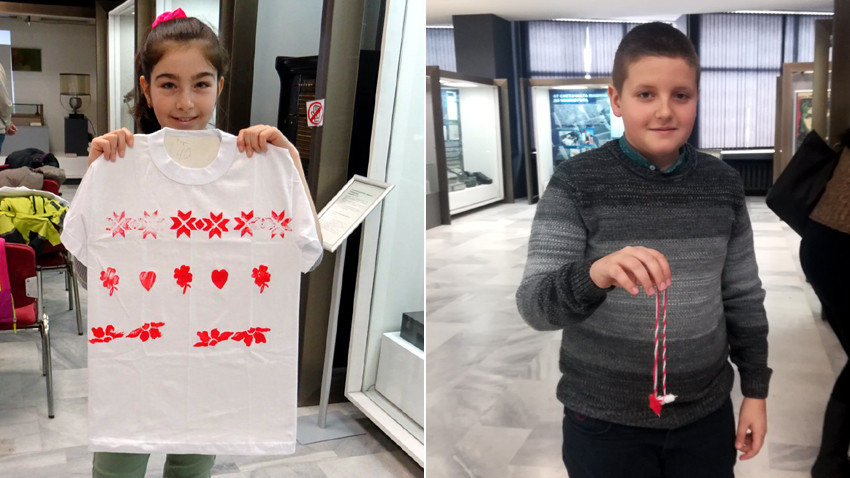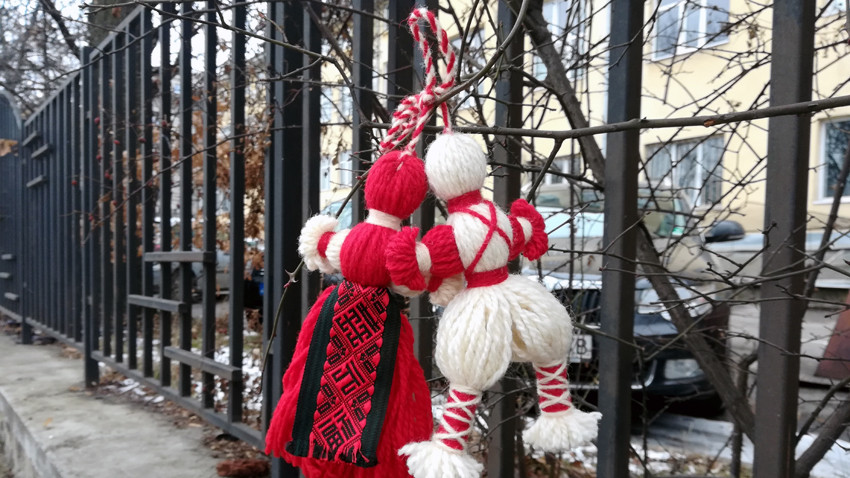On March 1, Bulgarians all over the world adorn themselves with what is known in Bulgaria as a martenitsa - a symbol of spring and the rejuvenating nature, an amulet for health, joy and success. The traditional martenitsa consists of two twisted threads – a red one for strength and health, and a white one for longevity. In modern days, however, martenitsas can be found in all sorts of variations – as adornments that one can attach to one’s clothes, in the shape of necklaces, bracelets, medallions, with a variety of shapes and made from a variety of materials.

Ralitza Koleva has been making martenitsas for 20 years now. She started with just a few types of knitted martenitsas but gradually expanded her range of products, currently offering over 200 models on the market.
“I work with different materials”, says Ralitza Koleva. “As decorative elements I prefer wooden beads, but people also seem to like metal parts and some small coins as part of the martenitsa. I use plastic beads and usually choose simpler colours. In recent years, people started to show a preference for martenitsas made of woollen yarn, although young people are still looking for something more modern and flashy”.

Ralitza Koleva says that cheap martenitsas produced in China are sold in bulk in Bulgaria, whereas the handmade ones seem to be less appreciated by buyers:
“Yet there are people looking for traditional martenitsas proper. Customers who choose a different martenitsa for each person individually are the ones who appreciate our work and even if their finances are limited, they are trying to make the right choice”, says Ralitsa. “The martenitsa is a symbol of health for me. When I make martenitsas, I always pray that they would bring health because this is what matters most”.
The colours of the traditional Bulgarian embroidery can be seen shining brightly in the martenitsas made by Dimka Dilkova and her sister Galia.

„We find inspiration in embroidery because the Bulgarian embroidery patterns are very beautiful, rich and varied, and embroidery specialists and ethnographers say they possess a protective power. And what could be better in a martenitsa than to have something so essentially Bulgarian as part of it”, Dimka Dilkova says with a smile.
The martenitsa masters craft martenitsas in a variety of shapes, symbols and embroidery patterns, but the most common and loved symbol is the so-called "elbetitsa".

“The elbetitsa in embroidery represents the beginning, the harmony in life. It symbolizes the eight directions of the world - the east, the west, the north, the south and the intermediate ones. This can be regarded as the most universal symbol, beautiful and complete in its appearance, with a lot of red colour inside of it. The martenitsa is a red and white symbol and should contain these colours. It carries the hope of something new, of the reviving life in spring. I believe that the interpretation of the symbolism of the martenitsa goes as follows: the red and the white as the symbol of the feminine and masculine powers, of health, of the underlying human qualities”, Dimka Dilkova believes.
At the National Polytechnic Museum in Sofia, children made not only the traditional martenitsas with the male and female characters of Pijo and Penda and martenitsas in the shape of small spindles, but also non-standard martenitsa T-shirts, learning about a very interesting craft that is now extinct.

“This craft is called basmadzhijstvo and its name is derived from the Turkish word "basma", meaning pressure, printing. In Bulgaria, the artistic printing with wooden prints on textile began in the second half of the 19th century, as the dyes were extracted from the leaves and roots of different plants, from the glands of some animals or from minerals”, says Vesselina Eneva, chief curator at the museum.
“I made a T-shirt with the wooden prints. It was quite interesting and I think the result is good. Previously, I heard about this from other people and watched it in some videos, but I never imagined I would do one of these martenitsas myself so now I can’t wait for it to dry so that I can put it on," Radoslava says.

“I made a martenitsa. It was somewhat difficult, especially the twisting of the threads, but I did it. I come to such a workshop for the first time, but I liked it a lot”, says Alexander.
“Martenitsas are to be taken off when we see the first migratory birds - the swallows or the first stork”, Vesselina Eneva reminds. “According to popular beliefs, they must be tied to a fruit tree, again as a symbol of fertility and joy”.

English Rossitsa Petcova
Photos: Ralitsa Koleva, Dimka Dilkova and National Politechnical MuseumSince its establishment on April 11, 2022, the Institute for Computer Science, Artificial Intelligence and Technology – INSAIT has achieved a number of successes and continues to position Bulgaria on the world's technological map...
Shortly after the opening of the motorcycle season in Sofia at the end of March, Bulgaria's capital city will host the country's largest motorcycle exhibition . The event takes place from today until April 14 at Arena 8888 Sofia . Between 700 and..
Students and teachers from two educational companies of the National Commerce and Banking High School won awards at the global business competition Youth Business Summit 2025 – US , organized by the US Headquarters of Educational Enterprises, the..
International Labor Day on May 1 in the mass consciousness of Bulgarians is often associated with the period of socialism and the grandiose demonstrations..

+359 2 9336 661
